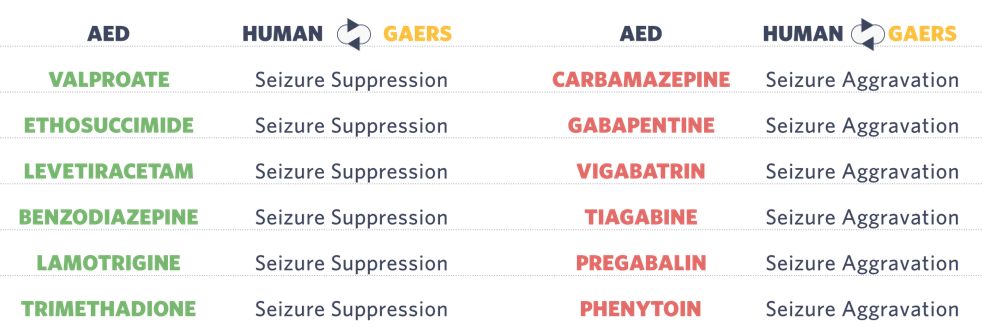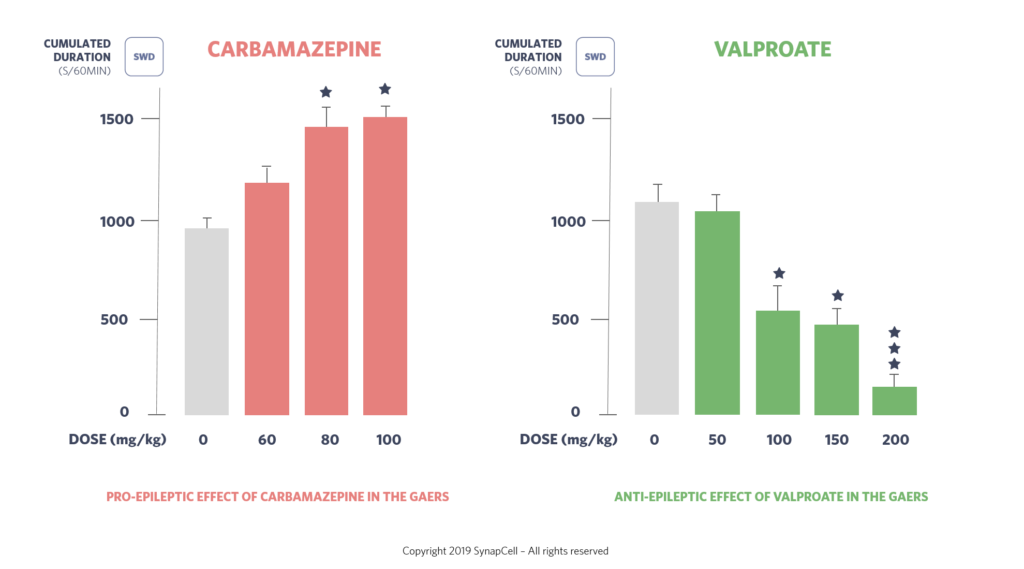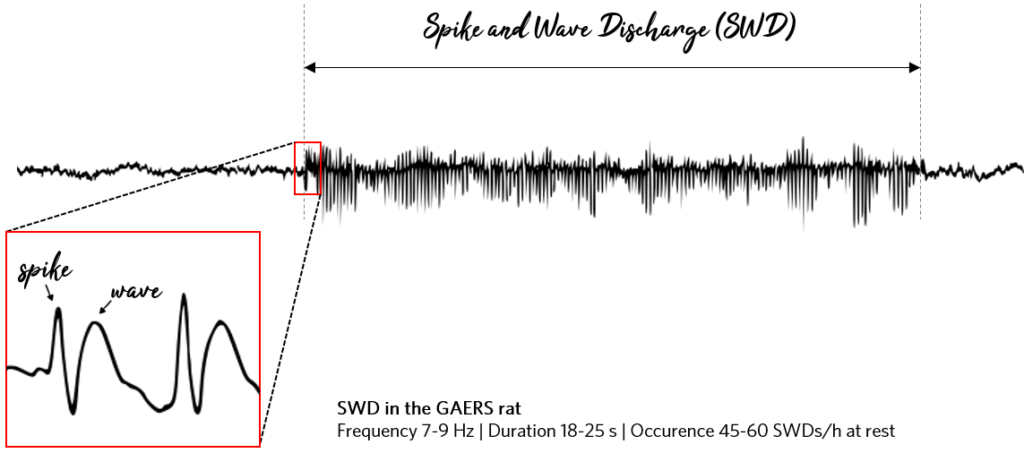What are Spike-and-Wave Discharges (SWD)?
Home » Resources / Blog / Preclinical Epilepsy - Spike-and-Wave Discharges (SWD)
Patients with Absence Epilepsy show generalized, non-convulsive seizures & typical Spike-and-Wave Discharges. The GAERS model displays spontaneous SWD and recapitulates most human disease features, making it clinically-relevant to evaluate new drugs for Absence Epilepsy.
Breaking it down:
Absence Epilepsy is a particular form of epileptic syndrome where patients show generalized non-convulsive seizures characterized by a brief unresponsiveness to environmental stimuli and cessation of activity. In human, typical absence seizures are associated with bilateral, synchronous and regular spike and wave discharges (SWD) (Loiseau et al., 1995). These epileptiform patterns are characterized by the repetitive occurrence of a Spike followed by Slow Wave.
This type of epilepsy presents a specific pharmacology different from the one observed in other types of epilepsies. Therefore, careful evaluation of new antiepileptic drugs in development is mandatory regarding a possible aggravation of SWD in idiopathic generalized epilepsies (Manning et al., 2003; Genton, 2000) and particularly absence epilepsy.
The genetic absence epilepsy rat from Strasbourg (GAERS) is a selectively inbred strain of Wistar rats displaying spontaneous SWD. For the past thirty years, the GAERS has become a reference model for absence epilepsy, since these rats were shown to present behavioral, electrophysiological, and pharmacological features of absence seizures (Depaulis et al., 2016).
Cortical EEG recording is characterized by SWD lasting 18-25 sec, with a recurrence of 45-60 seizures per hour. SWD start and end abruptly and are associated with a behavioral arrest lasting the time of the discharge (Vergnes et al., 1982).

As in human patients, SWD in GAERS are suppressed by antiepileptic drugs (AED) such as valproate (Dedeurwaerdere et al., 2011), ethosuximide (Nehlig et al., 1993) and levetiracetam (Gower et al., 1995), whereas other AEDs have no efficacy (lacosamide, Higgins et al., 2010) or can even aggravate SWD, particularly carbamazepine (Wallengren et al., 2005), phenytoin (Gurbanova et al., 2006), and high doses (>200mg/kg) of pregabalin (Vartanian et al., 2006).

The use of SWD as a biomarker for absence epilepsy therefore offers very high predictivity level for identifying anti-absence as well as pro-epileptic effect for AED in development or other compounds acting on the CNS (Klitgaard et al., 2002; van Luijtelaar et al., 2002).

